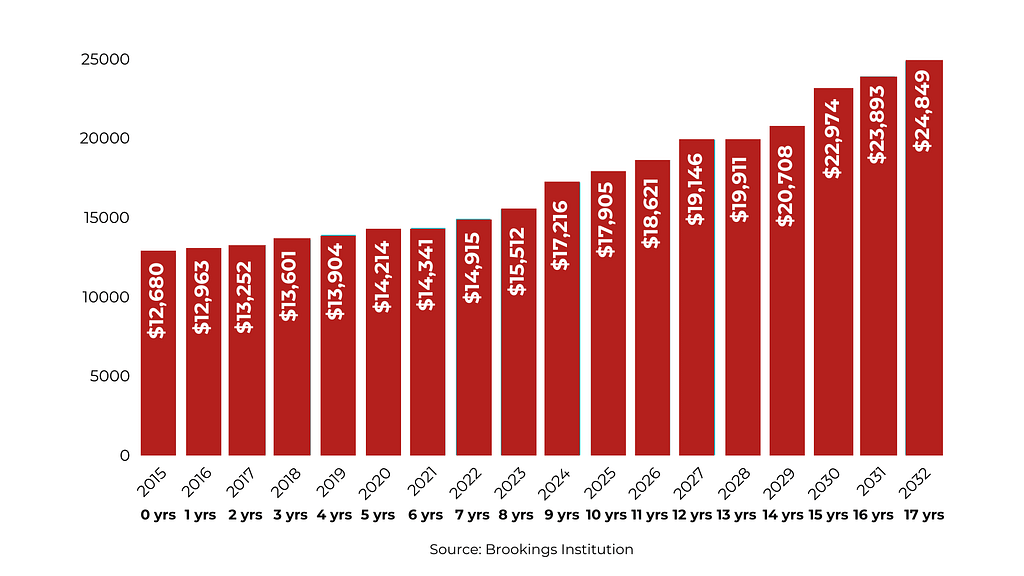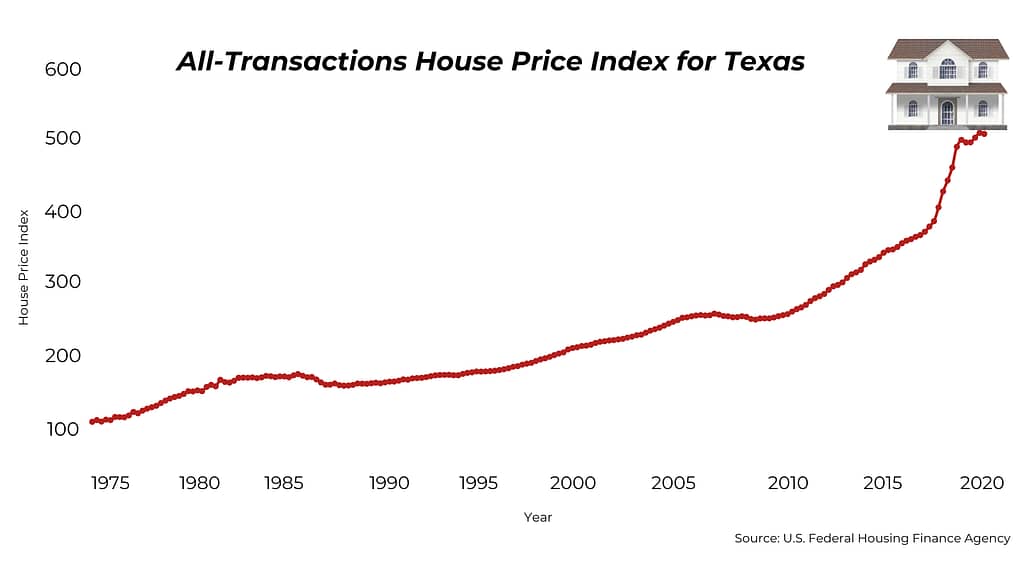Making Texas the best place to raise a family
This is a preview of our Texas 2036 newsletter taking a look at the state of parenting and raising a family in Texas. To receive this weekly look at our work, sign up here.
Making Texas the best place to raise a family

Texas 2036 was founded to make Texas the best place to live and work — for the next generation of Texans, and the generations after them. Our team at Texas 2036, which includes parents of over two dozen children, is doing its part today to help raise tomorrow’s generation of Texans.
We decided to take a look at how Texas parents are faring, including where opportunities exist for the state to do better.
Texas 2036 is committed to policies that solve many of the issues that Texas parents are facing. We are excited to continue to work to make parents’ lives better.
 “I’ve tried to explain to my seven grandsons that I could not have been born in a better place, at a better time, than Texas in 1940. If I had been born in any other place, I wouldn’t have had the same opportunities.”
“I’ve tried to explain to my seven grandsons that I could not have been born in a better place, at a better time, than Texas in 1940. If I had been born in any other place, I wouldn’t have had the same opportunities.”
— Texas 2036 Founder Tom Luce
What we know: Families with children under 18 make up a significant population in Texas — and that population is growing.
- Texas has the second-largest population of children under 18.
- Nearly 1 out of every 3 households in Texas is home to families with children under 18.
- Every 90 seconds a child is born somewhere in Texas.
Is being a parent really that expensive? Data says yes.
Nationally, it costs over $310,000 to raise a child born in 2015 from birth to age 17, according to a Brookings analysis.
The estimated annual costs of raising a child increase from $12,680 in 2015 when the baby was born to nearly $25,000 by 2032 when the child will be 17 years old due to a combination of inflation and increased expenses as that child matures.
Housing, food, transportation, child care and health care are leading cost drivers for families.

MORE DATA: A 2021 UT Austin study calculated the cost for a single-parent family in Texas to raise a child at about $12,400 per year, or about $13,000 per year for a married-parent family.
What do parents earn in Texas?

The median family income in Texas is $86,000. But actual income can change dramatically depending on a family’s situation.
Nearly four in five Texas families (78%) have more than one child, and just over half of Texas families are dual income and earn a median income of $111,000. Meanwhile, households led by a single mother account for nearly a quarter of Texas families and earn a median income of only $33,000.
Can Texas families afford to buy a home?

Texas families have been feeling the pinch from housing prices for years. Prices, mortgage rates and limited supply have led to some of the worst months for housing affordability in recent decades.
Meanwhile, the number of families in Texas experiencing homelessness is on the rise. According to federal data, the number of unhoused Texas families grew by 5% during 2023.
Did you know? The median home price in Texas in 2023 was $348,000.
What are the costs of child and health care?

The average annual cost of child care for toddlers in Texas is $8,718 — that’s $726 per month, a quarter of a single mother’s income.
In the Texas Voter Poll last year, 70% of respondents — including 77% of mothers surveyed — said that most working Texas parents do not have access to affordable child care options.
Health care: Texas has one of the highest costs for health care in the nation, and the largest population without health insurance. And even when families do have health insurance, they aren’t always getting the care that they need.
Also in the Texas Voter Poll, 52% of surveyed mothers said they or a household member postponed or skipped care over anticipated medical bills.
Is there a K-12 parent perception gap?

Texas students are struggling to acquire the basic knowledge and skills they need for success in the modern economy.
More than half of Texas students are below grade level in math, and nearly half of Texas students do not read on grade level. This translates to more than 1 million students in grades three through 10 who struggle with reading and math.
Nationally, only 10% of parents believe their child is below grade level, creating a child-parent perception gap.
How are parents preparing their children for life after high school?

Parents are still involved in their children’s lives after high school. As such, they are concerned about rising higher education costs over the years.
Here are the 2022 costs to pursue higher ed in Texas by type of institution:
- $51,236: the average annual cost to attend a private four-year institution in Texas.
- $18,807: the average annual in-state cost to attend a public four-year institution in Texas.
- $2,859: the average annual in-state cost to attend a public two-year institution in Texas.
Texas students rank second-to-last among peer states (e.g., Florida, California, New York, etc.) in terms of completing a two-year or four-year higher education institution within six years of first enrolling.
Did you know? AARP found that 20% of adults ages 50+ have no retirement savings, and more than half (61%) are worried they will not have enough money to support them in retirement.
Helping Texans Earn Family-Sustaining Wages

At Texas 2036, one of our key policy goals has been to ensure more Texans have access to the skills and credentials that will help them earn family-sustaining wages. We’ve also worked to support the state toward this shared goal.
House Bill 3767, which became law in 2021, requires the Texas Education Agency, Texas Higher Education Coordinating Board, and the Texas Workforce Commission to define a self-sufficient wage as the “minimum employment earnings necessary to meet a family’s basic needs while also maintaining self-sufficiency.” The agencies also must create shared goals to align career education and training programs to this standard.
Texas 2036 also continues to work in support of efforts to better align community college funding with the high-wage, high-demand jobs of the future.
Our 2023 Texas Voter Poll indicated 30% believe Texas children will have better opportunities than they did. What do you think?

Let us know in our online survey!
Here’s what some members of our team said:
“Our oldest turns 21 in 2036. Working here gives me the opportunity to shape the world that she and her two younger brothers will inherit as adults and is both an exciting opportunity and a weighty responsibility.”
— SVP, Strategy and Operations Justin Coppedge
“My children are ninth generation Texans. I can’t imagine raising a family anywhere else!”
— Senior Policy Advisor Mary Lynn Pruneda

